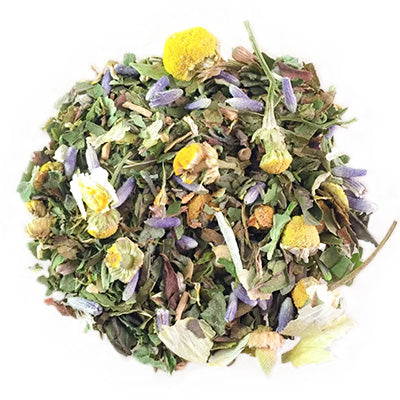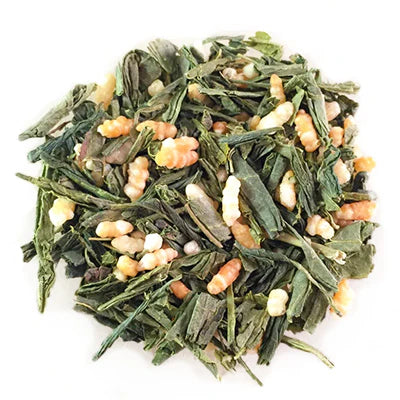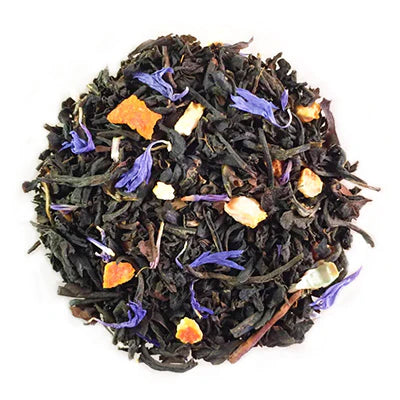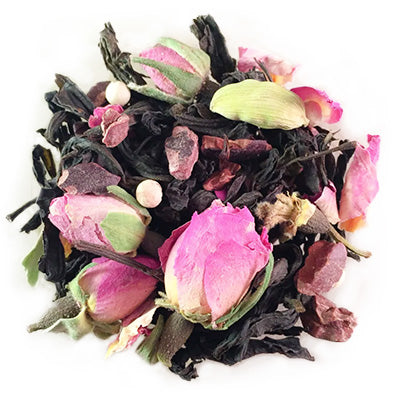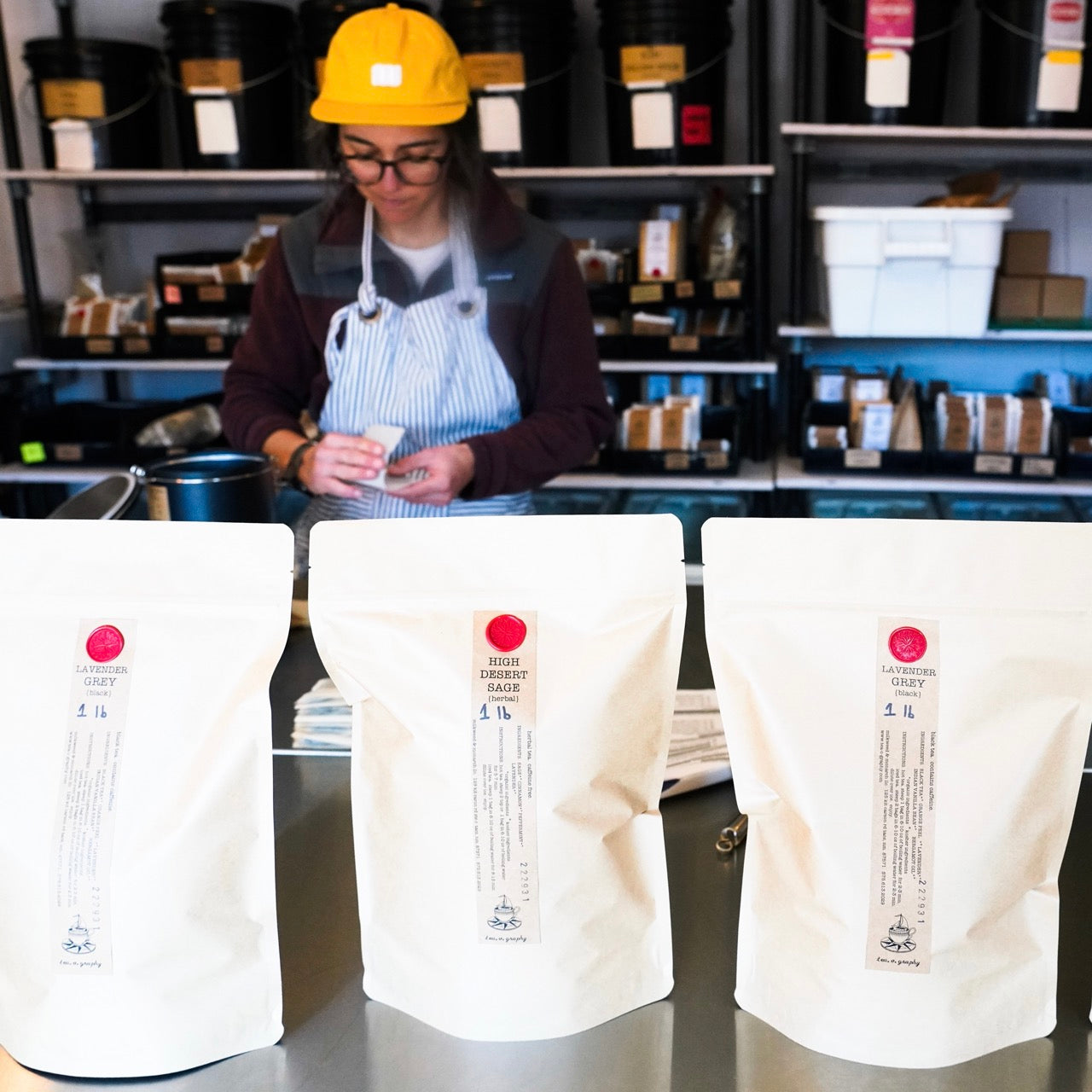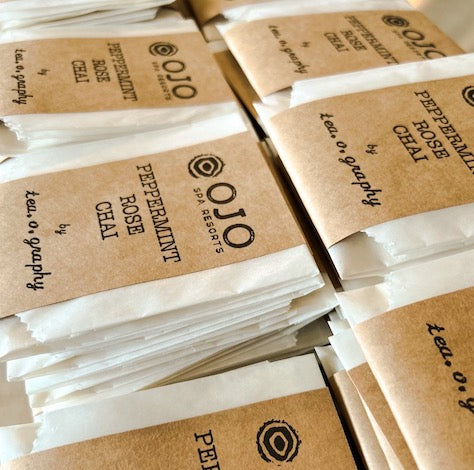
Happy Pride, today and everyday, from the Tea Fam!
THE AGONY (OR DANCE) OF THE LEAF 
Something I learned about while researching for this blog is the poetic phrase “the agony of the leaf" (sometimes referred to as the “dance of the leaf"). This turn of phrase encapsulates the precise moment when hot water hits the dried tea leaf and it begins to swirl, unfurl, and release flavor.
The description that struck me the most was from a queer tea shop owner in Kentucky, Austen Smith : “The transformation that tea undergoes in the process releases the true essence of the plant and frees the leaves from the contortions of humanity. It is this unrelenting combination of heat and moisture that forces the leaves to open up and reclaim their wholeness, even in the afterlife. It is a liberatory method that we could all study and learn from."
This resonates with me as a metaphor for the queer community, how we face constant pressure and violence—and yet we dance, we celebrate, we make beautiful things. Our art and culture steep into the wider society to add new flavor, depth, and diversity. An act of transformation in the cup—just as queer people transform ourselves and society through the act of being queer. This concept inspired me to explore tea through culture, identity, politics, and nonconformity. Tea, especially within this context, is a ritual of connection that transcends time, shifts political boundaries, and inspires social change.
As the most consumed beverage in the world, tea has a long, rich history that spans time and crosses continents. Traditions, rituals, and stories have built up around this unique drink wherever it goes. Everywhere that tea has touched, different communities and individuals have made it their own, and the queer community is no different!
This month we illuminate the ways in which tea is linked to queer history + identity and celebrate and preserve the contributions LGBTQIA+ people have made to tea culture.
Not only do millions of queer people make, drink, and enjoy tea all over the world - they also use tea as a way to actively form community and shared traditions...as a tool of social resistance, celebrating queerness within a society that seeks to hide and suppress it.
TEA HAS ALWAYS BEEN POLITICAL
From colonization to modernization, tea has a long history as a political drink. Tea has been used to both enforce social class and gender expectations, and also used as a way to protest those same expectations.
During the English colonial expansion of the seventeenth century, tea became associated with dominance. At the time, drinking tea was considered a delicacy only available to the English upper classes. Eventually tea made its way to the English middle and lower classes, who were seeking the same luxury as the elites, this in itself was a form of social resistance.
The rules of etiquette at a Victorian tea party reflected the expectations of how to behave in the wider society. The tea party served as a way to instruct participants in socialization. For example, there would be an array of beautiful small snacks at traditional afternoon tea, but the expectation was for the guests to show restraint. The food served more as an aesthetic temptation than actual sustenance, showing how much the Victorians valued politeness and restraint rather than enjoyment.
One of the ways that Victorian tea exemplifies the enforcement of gender expectations was the creation of male-only coffeehouses to exclude women from public spaces, because tea houses were unisex. Due to this exclusion, tea time became a traditionally feminine event. But those same tea rooms that enforced such strict rules on English women of the time also gave them the opportunity for early feminist activism. Abolition, temperance, and suffrage are all political movements that can be linked to women organizing around the tea table.
There are other historical examples of tea as a form of protest. For instance, in the 18th Century, refusing sugar in your tea was a statement against slavery and sugar plantations. Also in the 18th Century, colonists during the Boston Tea Party poured tea in the harbor as a protest against the English and taxation of the colonies. To early American colonists, tea came to represent the English, leading to coffee becoming the favored drink in the USA. This, interestingly enough, further gendered tea as feminine and refined.
GAY TEA DANCES 
![]()
Queer tea spaces in comparison tend to be more unconventional, not constrained by time, order, or strict rules of etiquette. While a traditional western tea party holds the performance of femininity through purity and delicacy, queer tea culture has a disregard for social status and is instead focused on holding space to celebrate individuality and freedom of expression. That celebration often includes a different kind of performance, one of fantasy, camp, and glamour.
For example, “gay tea dances” date back to a time when it was impossible to be out in public. There were laws in place across the United States and Europe that effectively outlawed gay bars from operating. In the 1950s and ‘60s, people could be arrested for dancing with the same gender or wearing clothes associated with the opposite gender. It was illegal (under the claim of disorderly conduct) for bars to sell alcohol to suspected queer people. Bar owners risked police raids and losing their liquor license if they did not comply.
Under these constraints, queer people had to get creative. When police would raid gay bars—which they did very frequently, leading to the Stonewall Uprising in 1969—same gender couples would quickly rearrange and choose a partner of the opposite gender, or couples would simply start dancing apart. This eventually became a new way of dancing that is still practiced today.
Inspired by the tea dances of previous centuries, queer people hosted “gay tea dances.” Since tea service traditionally took place in the afternoon, there was less chance of police raids. Drinking tea rather than alcohol also made the event less illegal and made it possible for people to still meet and form community, yet again using tea as a form of resistance. It is also plausible that the tools of teatime, the teapot, and teacup made it possible to conceal alcohol in true prohibition fashion.
In the spirit of tea as liberation, tea as political statement, tea as resistance, it’s important to celebrate queer contributions to tea, and how the drink and the word are embedded in the fabric of queer history and language!
WHAT’S THE ‘TEA’?![]()

Around the time that “gay tea dances” were falling out of fashion or getting subsumed by the larger bar and nightlife culture, “tea” was becoming codified in the lexicon of Drag Balls by Black and Latino queers in the Ballroom scene of 1980s New York. One of the earliest print uses of the term “T” or “tea” comes from an interview with The Lady Chablis in John Berendt's nonfiction book Midnight in the Garden of Good and Evil. In the book, “tea” referred not to the drink or the plant, but instead was a shorthand for a hidden personal truth. The Lady Chablis makes it clear that her “T,” or her hidden truth, is that she is transgender.
As black queer culture seeped into the wider queer community, so too did the use of “tea,” which took on a double-edged meaning and referred to both a hidden personal truth, or someone else’s hidden truth, i.e. gossip. Phrases like “what’s the tea?”, “spill the tea,” and “that is tea” became inventive new ways for queer folks to communicate with one another. While “gossip” tends to have a negative connotation in other contexts (which might come from the association of gossip with femininity), in this case, gossip has a long history with tea culture. It has been used as a way to connect, to share truths and stories while drinking the world’s favorite beverage.
It’s important to keep the rich history of tea alive, and it is important to honor all the contributions to tea culture around the world and in every community. During Pride Month, it is particularly important to remember and acknowledge how the LGBTQIA+ community has contributed by using tea culture and language as resistance and community. As a celebration of individuality and creative expression in the face of oppression.
Whether you are “spilling tea” or drinking tea, it's all about the people you share it with—it’s all about connection.
RECOMMENDATION:

- Butterfly Pea Flowers - a canvas of culture, a canvas of blue – a metaphor for change, like butterflies in flight... Experience this sapphire brew as a calming tonic or for a little extra magic as a simple syrup added to lemonade (watch as the indigo blue transforms to a bright magenta!)

